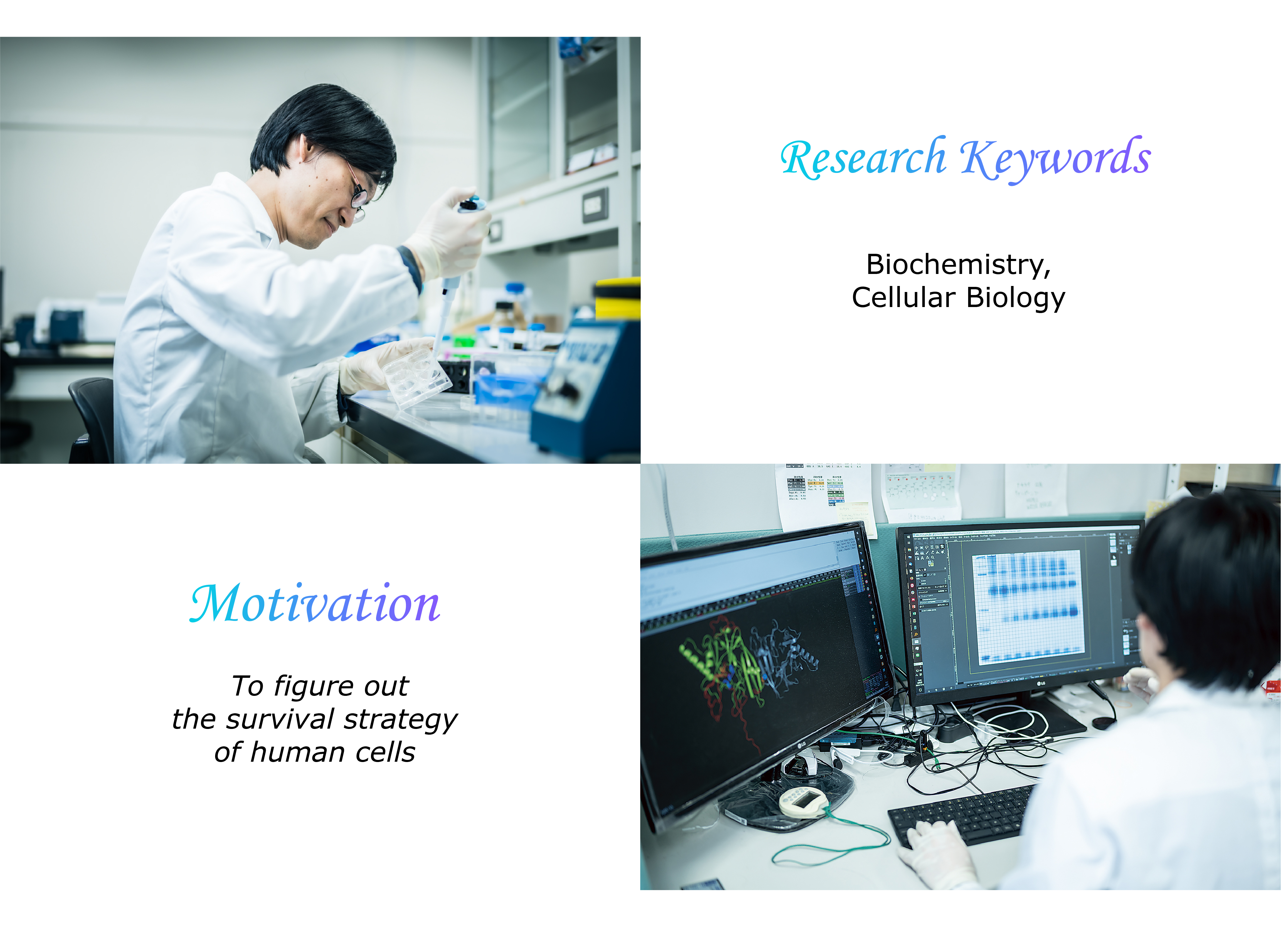

- M. Matsusaki, R. Okada, Y. Tanikawa, S. Kanemura, D. Ito, Y. Lin, M. Watabe, H. Yamaguchi, T. Saio, Y. Lee, K. Inaba, M. Okumura, “Functional Interplay between P5 and PDI/ERp72 to Drive Protein Folding”, Biology, 10(11), 1112 (2021). DOI
- M. Matsusaki, S. Kanemura, M. Kinoshita, YH. Lee, K. Inaba, M. Okumura, “The Protein Disulfide Isomerase Family: from proteostasis to pathogenesis”, Biochim. Biophys. Acta Gen. Subj., 1864(2), 129338 (2020). DOI
- M. Matsusaki, A. Okuda, T. Masuda, K. Koishihara, R. Mita, K. Iwasaki, K. Hara, Y. Naruo, A. Hirose, Y. Tsuchi, R. Urade, “Cooperative Protein Folding by Two Protein Thiol Disulfide Oxidoreductases and ERO1 in Soybean”, Plant Physiol., 170(2), 774-789 (2016). DOI
To view a more comprehensive list of publications, please click on the "researchmap" link below.
Born in Ishikawa, Dr. Matsusaki attended Kyoto University, and after graduating from the Faculty of Agriculture in 2011, he went on to study at the Graduate School of Agriculture at the same university. After obtaining his doctorate in 2016, he became a researcher at Kyoto University Graduate School of Agriculture. In 2018, he took up the post of Academic Researcher at the Frontier Research Institute for Interdisciplinary Science at Tohoku University, and in 2021, he took up his current post. Dr. Matsusaki travelled the world with his lab colleagues when he was a student, and experienced journeys that brought him into contact with diverse values.
In the fields of biochemistry and molecular biology, textbooks have been rewritten many times due to the many great discoveries in the past few decades and Dr. Matsusaki’s research theme is to further explore such a booming field. In order to understand protein homeostasis maintenance in cells, he is focusing on IRE1, a stress sensor molecule that detects proteins with defects (misfolded proteins) and regulates stress response signaling through higher-order oligomer formation. Until now, no one knows “how many IRE1 molecules form a higher-order oligomer”. Therefore, using the unique “Clear Native-PAGE” method, Dr. Matsusaki is observing how many IRE1 molecules forms higher-order oligomer when they sense misfolded proteins and/or redox environmental perturbation. His experiments may reveal how IRE1 regulates the level of stress response signals depending on the stress level. In the future, elucidating the molecular mechanism of oligomer formation and the signaling network with other sensor molecules is expected to be the key to new therapeutic strategies in diseases caused by disruption of the stress response.

 Home
Home




